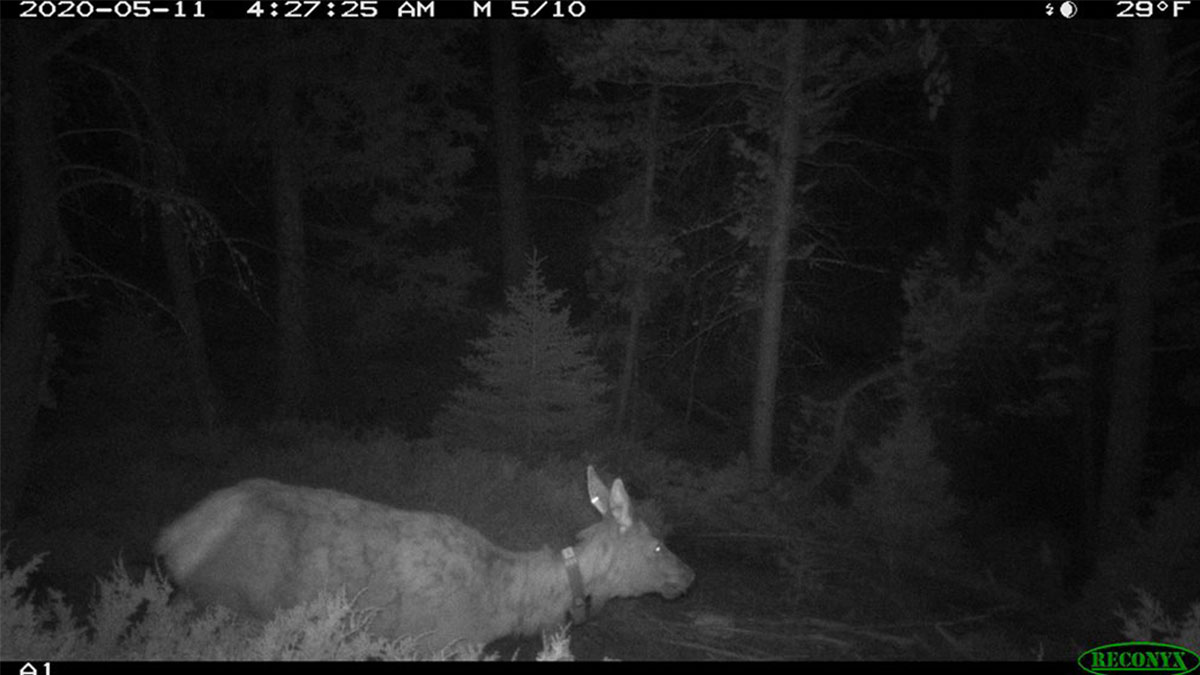Below is a news release from the Wyoming Game and Fish Department about a research project funded, in part, by the Rocky Mountain Elk Foundation.
A cow elk that was captured and collared earlier this year (2020) as part of a larger study in cooperation with the University of California–Berkeley accessing wolf and elk interactions, has been tracked through multiple data collection methods.
In February, the cow elk was captured and collared in the Meeteetse Rim area where many elk congregate in winter. Elk captured as part of this study are fitted with GPS collars that transmit a location every two hours and if pregnant, a vaginal implant transmitter (VIT) is placed within the birth canal so that when the cow gives birth, the VIT is expelled with the calf. When expelled, the VIT detects a decrease in temperature and then communicates with the collar the cow elk is wearing. The collar then sends an alert to researchers through satellites via text and email that there has been a birth. Researchers then visit the birth sites to take information on a variety of habitat and landscape variables. Future work with this type of collaring and VIT placement may include the collaring of elk calves to better understand calf survival in the Cody area.
Cody area wildlife biologist Tony Mong said that in addition to the broader scope of the study, this information gives insight into the life histories of elk in local herds and the influence weather and other variables have on migratory movements.
This individual elk wintered in the Meeteetse Rim area and in mid-May, moved to summer range in the Thorofare. On May 21, a signal was picked up from the VIT indicating the cow gave birth near the confluence of the Yellowstone and Thorofare rivers.
“This elk migrated about three weeks earlier than we saw elk move to the same area last year,” Mong said. “It’s interesting to see this individual’s movement patterns and to learn year-to-year how the timing of migration and parturition changes given different weather patterns.”
An image of a collared cow elk that is likely this individual was also caught on a trail camera along the migration route in the Needle Creek drainage.
“Trail cameras along migration routes provide researchers an additional way of gathering information,” Mong said. “Using multiple methods to collect detailed information on the Cody elk herd acts as a series of checks and balances on each other, leading to a higher level of confidence in the data we are using to make management decisions.”
This project has been made possible by the Rocky Mountain Elk Foundation, the Knobloch Family Foundation and many other important contributions.
(Photo source: Wyoming Game and Fish Department)
